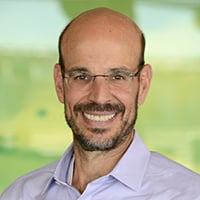Fueled by a major investment by the Gates Frontiers Fund, a newly announced Gates Institute on the University of Colorado Anschutz Medical Campus will stand ready to transform the frontier of regenerative medicine and cellular and gene therapies in the Rocky Mountain region.
As with every new Western adventure, success lies deeply in a strong leader able to wrangle the best players and keep the wagon train moving in the right direction.
|
|
“This is Terry Fry,” said Diane Gates Wallach, co-trustee of the Gates Frontiers Fund with her brother, John Gates. “He is so perfect for this position. He’s a team leader and a team player who has walked all sides of this field,” said Wallach, whose investment – in partnership with CU Anschutz – is expected to grow to $200 million over the next five years.
Dennis Roop, PhD, current director of the Gates Center for Regenerative Medicine, echoed those sentiments. “I can’t think of anyone I would trust more to turn the reins of the Gates Center over to than Terry.”
Terry Fry, MD, will direct the new institute, aimed at moving discoveries efficiently from the lab to the clinic – his area of focus since leading first-in-human clinical trials for the National Institutes of Health.
A pediatric oncologist, renowned expert and pioneer in CAR (chimeric antigen receptor) T-cell therapy, and head of T Cell Therapeutics at Sana Biotechnology, Fry brings a rich background to the position. A clinical professor in the University of Colorado School of Medicine whose work at NIH was highlighted in a Discovery Channel documentary called “First in Human,” Fry joined the campus from the NIH in 2018.
CU Anschutz Today recently talked with Fry. The interview has been edited for length and clarity.

 CU Anschutz Chancellor Donald M. Elliman Jr., Terry Fry, MD, and Diane Gates Wallach. (Photo by DeCroce Photography).
CU Anschutz Chancellor Donald M. Elliman Jr., Terry Fry, MD, and Diane Gates Wallach. (Photo by DeCroce Photography).



